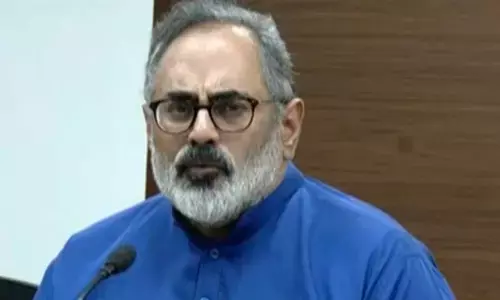RBI goes way beyond rate cut

By balancing various measures, RBI has created a strong enabling force to bring down effective interest rates on sustainable basis that can aid economic growth. Thus when seen in conjunction, these focused measures when put together can significantly bring down liquidity management costs, uncertainty and steep volatility, if any, in money market rates.
Though Reserve Bank of India (RBI) chose to restrict the repo rate cut to 25 basis points in its first bi-monthly monetary policy on April 5, 2016, it announced several concrete measures to cut costs of banks, so that lending rates could be brought down. Thus the new policy measures are set to further lower bank’s lending rates. Mere cutting repo rates without a systematic transmission mechanism may not provide the desired result. A rather compelling environment is created to help banks to effectively transmit the interest rate cuts. One of the most striking policy changes has been to soften the liquidity management regime by providing an assured timely supply of liquidity at low rates with variable repo rate auctions in tenors ranging from overnight to 56 days. It is also intended to align the call money rates close to repo rates. As a policy measure, RBI has identified the need to bring down the liquidity deficit from one per cent of Net Demand and Time liabilities (NDTL) of banks to near zero or neutral position. The assured stream of liquidity infusion can improve cost effectiveness of banks in managing their funds on daily basis. Thus, among many, key measures encompass reduction of repo rate to 6.5 per cent, reduction of minimum daily maintenance of the cash reserve ratio (CRR) to 90 per cent from 95 per cent from April 16, 2016 and reduction of difference in borrowing (repo rates) and lending rates (reverse repo rates) of banks from RBI down from 100 basis points to 50 basis points. As bank rate is brought down to 7 per cent, the reverse repo rate is therefore brought down to 6 per cent and marginal standing facility (MSF) to 7 per cent.
Diminishing lending rates
By balancing various measures, RBI has created a strong enabling force to bring down effective interest rates on sustainable basis that can aid economic growth. Thus when seen in conjunction, these focused measures when put together can significantly bring down liquidity management costs, uncertainty and steep volatility, if any, in money market rates. They can leave enough margins with banks to reduce lending rates in due course. Having already enforced the computation of lending rates based on Marginal Cost of Funds based lending rates (MCLR) from April 1, 2016, short term lending rates have already come down. For example, as against the SBI base rate of 9.30 per cent, the overnight MCLR now works out to 8.95 per cent (35 basis points down). It is 9.05 per cent for one month, 9.10 for 3 months and till 3 year tenor where it works out to 9.35 per cent. While HDFC has same rates, ICICI has a difference of five basis points in some tenors. The point is the best borrower can now get short term loans from banks at lower interest rates from FY17 compared to the earlier period.
However, loading of risk premium on these rates are the bank’s prerogative depending on the risk perception and competition. Again lending rates will further come down during next monthly review of lending rates when the current cut in repo rate will be factored by banks.
Macroeconomic factors
RBI maintained its outlook for FY16 at 7.6 per cent due to favorable macroeconomic factors. Having successfully charted the CPI led inflation path well below the projected trajectory of 6 per cent in January 2016, RBI expects to reach the inflation target of 5 per cent set in the glide path by March 2017 and eventually 4 per cent by March 18, despite certain uncertainties surrounding monsoon/harsher weather conditions. The upside risks in inflation persists due to likely upturn in commodity prices, fears of drought in some parts, and pronounced water scarcity that can affect price line. But Government’s effective supply side measures and enhanced effectiveness of public distribution system can provide enough comfort. Similarly, though the impact of implementation of 7th central pay commission and One Rank One Pension (OROP) continue to pose challenge, the commitment for fiscal prudence spelt out in the union budget is a sufficient assurance. Based on the improved perception on overall economic conditions and income, RBI’s consumer confidence survey of March 2016 shows marginal improvement in consumer sentiments. The industrial outlook survey also suggests that business expectations for Q1 of FY17 continue to be positive. Thus the dovish and accommodative outlook of RBI clearly points towards further softening of interest rates as and when the economy transmits such positive signals.
Reform measures
Besides constructively addressing some of the impediments in the reduction of lending rates by banks, RBI is planning to bring about several policy reforms through consultation papers to widen scope of banking space. In the context of financial inclusion, RBI intends to redefine bank branches and carve out permissible methods of enhancing banking outreach. Strengthening competencies of business correspondents (BCs) through training and certification process, introduction of accreditation of credit counsellors to help MSME entrepreneurs to access easy bank credit, enhancing cyber security, putting in place a broad payment and settlement vision -2018 and working out a methodology to facilitate peer to peer (P2P) lending etc are some of the policies in the offing. In addition to the 11 payment banks and 10 small finance banks set to be rolled out soon, more differentiated banks are being planned. Custodian banks, whole sale and long term finance banks may be established to provide banking services to identified business segments. Such specialized banks can pose a challenge to existing universal banks that have to fine tune quality of their services to stay competitive. Thus, the monetary policy statement of RBI is not merely a tactical tool to guide interest rate transmission but it goes far beyond to modernise financial intermediation encompassing visionary policies that can transform the banking services akin to international standards. While bank reform is a journey meant to establish last mile banking connectivity, electronic payment vision shall be the umbilical cord to make it happen. Expansion of banking space based on specialized skill sets driven on digital mode can only help reach the ultimate goal banking for all.
(The author teaches at the National Institute of Bank Management (NIBM), Pune. The views are his own)














